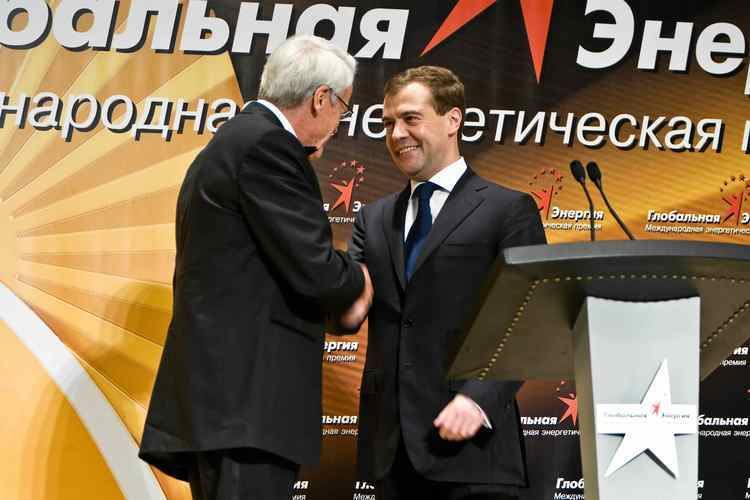Residence Canada Website clembowman.info Nationality Canadian Name Clement Bowman Employer Imperial Oil | Role Chemical engineer Occupation Chemical Engineer | |
 | ||
Known for Founding chairperson of Alberta Oil Sands Technology and Research AuthorityRecipient of the Order of CanadaLaureate of the Global Energy International PrizeInductee of the Canadian Petroleum Hall of Fame Parents Clement Willis Bowman Sr, Emily Bowman | ||
Clement "Clem" Willis Bowman, C.M., PhD., P.Eng., HCIC, FCAE (born January 7, 1930 in Toronto, Ontario) is a Canadian chemical engineer, the founding chairperson of the Alberta Oil Sands Technology and Research Authority. He is a recipient of the Order of Canada and the Global Energy Prize.
Contents

Education

He was born to Emily and Clement Willis Bowman Sr. on January 7, 1930 in Toronto, Ontario. His father was an émigré from England who settled in Ingersoll, Ontario. After high school, Bowman enrolled in the University of Toronto where he graduated as a chemical engineer in 1952.
After working several years with DuPont Canada on the production of nylon, Bowman returned to the University of Toronto in 1957 for postgraduate work. In 1958, he attained a MASc and then a PhD in 1961.
Career
After receiving his PhD, he joined Imperial Oil Limited, an affiliate of Exxon Corporation, at the Esso Research Centre in Sarnia, Ontario.
In 1964, he was assigned to a test of bitumen separation on the oil sands formation in Alberta. He worked for Syncrude Canada Limited for the next six years, conducting studies on the molecular and interfacial properties of the oils sands and the mechanism of the Clark hot water separation process., leading to a paper presented at the Seventh World Petroleum Congress in Mexico City in 1967.
In the late 1960s the government of Alberta decreased the rate of oil sands development, and he returned to Imperial 's research department in Sarnia, and was later promoted to senior researcher.
In 1975, he was appointed the first chairperson of the Alberta Oil Sands Technology and Research Authority (AOSTRA . AOSTRA is a crown corporation with a fund of $100 million (worth 400 million today). He was responsible for starting a project to obtain access to the deep oil sands deposits by sinking a shaft and drilling horizontal wells by directional drilling, now the basis of the widely adopted method of steam assisted gravity drainage (SAGD).
In 1984, he returned to Imperial Oil as Vice President—Research of its division Esso Petroleum Canada, with responsibility for the Sarnia Research Centre. In 1986, he returned to Alberta as President of the Alberta Research Council, an Alberta crown corporation. At the Council, he led the organization into joint research ventures with the private sector, with the oil sands and their environmental issues remaining a priority. He left the Alberta Research Council in 1991 to open his own consulting practice. In 1989, five years after leaving AOSTRA, he received the K. A. Clark Distinguished Service Award for his contributions to AOSTRA.
He was a key adviser to Premier Lougheed on energy issues throughout the 1970s-1980s.
In 1991, he developed a decision-making methodology, called ProGrid, based on the work of Alex Lowey and Phil Hood in their book The Power of the 2×2 Matrix. The agency used it for practical decisions such as selecting research projects, choosing corporate strategies, and making decisions on proposals, grant applications and awards in a number of Canadian research institutions and Centres of Excellence, such as Alberta Heritage Foundation of Medical Research, the Canadian Foundation for Innovation and the Ontario Centres of Excellence.
From 2005 to 2015, he chaired the Energy Pathways Task Force for the Canadian Academy of Engineering, which published four reports and two books and held many workshops presenting energy options for Canada. He received the CAE Distinguished Service award in 2007 for his work on the task force.
Recognition
During his career, he held the office of President or Chairperson at the Canadian Society for Chemical Engineering, the Chemical Institute of Canada, and the Canadian Research Management Association, In 1991, he received the Canadian Research Management Association's Medalist Award and the Alberta Science and Technology Leadership Award. He was a Member of the National Research Council and served on the Executive Committee of the Canadian Association for the World Petroleum Congresses. In 1993, he became an Honorary Fellow of the Chemical Institute of Canada, and in 1994 was installed as a Member of the Order of Canada. In 2014, he was selected as an Honorary Fellow of the Canadian Academy of Engineering.
In 2008 he received the Global Energy International Prize in 2008, awarded by Russian President Dmitri Medvedev.
In 2010, The University of Western Ontario named a $50 million CAD national centre for technology commercialization, the Bowman Centre, after him. The Bowman Centre is housed at the university’s Western-Sarnia-Lambton Research Park campus. In 2015, the Canadian Chamber of Commerce presented the Canada’s Resources Champion Award to the Bowman Centre.
